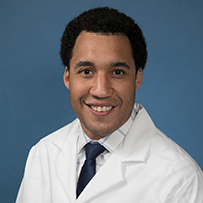DiaSorin Education
WEBINARS, P.A.C.E.® CE CREDITS 

COVID-19 Testing and the role of Antigen assays today and moving forward
Topics & Tracks:
- - Advances in Diagnostics Technologies (Molecular, Point of Care, Proteomics)
- - Leveraging Laboratory Data (Opioid Crisis)
- - Considerations for Specific Patient Populations
- - Laboratory Stewardship and Patient Safety
 Vincent Streva, PhD
Vincent Streva, PhD
Associate Laboratory Director
Sherman Abramas Laboratory
Managing and Monitoring Inflammatory Bowel Disease
Learning Objectives:
- - Describe Inflammatory Bowel Disease (IBD) pathophysiology and epidemiology
- - Understand treat to target goals
- - Review role of fecal calprotectin (FC) in IBD
 Anita Afzali, PhD
Anita Afzali, PhD
Ass. Prof of Clinical Medicine
Gastroenterologist
Ohio State University Wexner
Medical Center
COVID-19: A Clinical Lab's Response to a Pandemic
Learning Objectives:
- - Identify current COVID-19 testing status and what might be next for laboratories in the US.
- - Defining & fine tuning COVID-19 diagnostic algorithms for both a serological & molecular approach.
- - Discuss current testing recommendations and their implementation by one clinical laboratory.
 Omai Garner, PhD, D(ABMM)
Omai Garner, PhD, D(ABMM)
Associate Clinical Professor
Section Chief - Deparment of Pathology and Laboratory Medicine
UCLA Health System
Putting the Cart Before the Horse: SARS-CoV-2 Antibody Tests
Learning Objectives:
- - Describe the different types of serological tests for detecting antibodies to the novel coronavirus.
- - Explain the utility & limitations of serology testing in the management of the COVID-19 pandemic.
- - Describe the process of validating a SARS-CoV-2 antibody test.
 David G. Grenache, PhD, MT(ASCP), D(ABCC)
David G. Grenache, PhD, MT(ASCP), D(ABCC)
Chief Scientific Officer for TriCore
Reference Laboratories
Coronavirus Disease 2019 (COVID-19): Role of Serologic Testing in Diagnosis & Assessment of Viral Immunity
Learning Objectives:
- - Provide education on COVID-19 disease and SARS-CoV-2.
- - Review the types of tests used for the diagnosis of infectious diseases.
- - Discuss approaches to serologic test development.
- - Review the kinetics of the antibody response and the functions of immunoglobulin subclasses in the immune response and analytes for monitoring immunity to a pathogen (SARS-CoV-2)
- - Discuss pros and cons in measuring virus-specific IgG vs IgG+IgM.
- - Discuss the functions of the SARS-CoV-2 proteins commonly employed in serologic assays (Nucleocapsid Protein and Spike Protein)
- - Review the differences and similarities of diagnostic antibodies and neutralizing antibodies.
 David M. Engman, MD, PhD
David M. Engman, MD, PhD
Chairman Emeritus of Pathology,
Cedars Sinai Medical Center
Clinical Professor of Pathology, UCLA
Adjunct Professor of Pathology, Northwestern University
Implementation of Helicobacter Pylori Stool Antigen Testing in a Large Metropolitan Center: A Prospective Comparative Diagnostic Trial
Learning Objectives:
- - Gain understanding of H.pylori testing options
- - Understand challenges and benefits of utilizing H.pylori stool antigen testing
- - Gain skills to effectively manage key clinician stakeholders
 Dylan R. Pillai, MD, PhD
Dylan R. Pillai, MD, PhD
Professor of Pathology & Laboratory Medicine & Medicine,
University of Calgary
Role and Importance of Gastrointestinal Inflammation Markers in Diagnostics
Learning Objectives:
- - Review of key Fecal Inflammatory Biomarkers and use in Clinical practice
- - Gain understanding of Calprotectins role as a GI inflammatory biomarker
- - Understand economic impact of utilizing Calprotectin
 Roy Sherwood, BSc, MSC, DPhil
Roy Sherwood, BSc, MSC, DPhil
Professor of Clinical Biochemistry
King's College London, UK
Fecal Elastase-1 - a Biomarker for Pancreatic Exocrine Insufficiency
Abstract:
- - Fecal elastase-1 – a biomarker for pancreatic exocrine insufficiency (EPI) continues to gain traction as an ideal biomarker for assessing EPI. This presentation will include a review of the physiology and function of the pancreas, epidemiology and prevalence of disease, current clinical guidelines along with new and existing testing options for pancreatic insufficiency.
 Roy Sherwood, BSc, MSC, DPhil
Roy Sherwood, BSc, MSC, DPhil
Professor of Clinical Biochemistry
King's College London, UK
Importance and Role of Biomarkers in the Management of Pediatric Inflammatory Disease
Learning Objectives:
- - Review basic immuno-pathobiology of IBD and the phenotypes of IBD or IBDs - Crohn’s, Ulcerative Colitis and Indeterminate Colitis
- - Briefly describe the epidemiology of IBD in children
- - Describe the diagnostic testing for IBD in the pediatric patient
- - Use of fecal biomarker(s), calprotectin for diagnosis and treatment monitoring
- - Outline approaches to treatment of IBD in children; and why these approaches might work, and why fecal calprotectin is an optimal tool to assess outcomes
 Benjamin D. Gold, MD, FACG, FAAP
Benjamin D. Gold, MD, FACG, FAAP
Attending Physician,
Pediatric Gastroenterology,
Hepatology & Nutrition Co-Lead Investigator,
Gi Care for Kids Site for ImproveCareNow, Quality Improvement Collaborative
The Role of Interferon Gamma Release Assay (IGRA) Testing in the TB Testing Program
Learning Objectives:
- - Review the role of IGRAs in the diagnosis of TB infection
- - Summarize recent changes in IGRA testing including guidelines associated with testing certain populations
- - Discuss the implementation of IGRA testing in a public health testing program
 Marie-Claire Rowlinson, PhD
Marie-Claire Rowlinson, PhD
CLIA Laboratory Director
Assistant Laboratory Director
Laboratory Testing for Viral Hepatitis: what's new and what has changed?
Abstract:
- - The demographic profile of hepatitis B and C has seen a paradigm shift over the last 10 years and as a result clinical guidelines for hepatitis testing are changing. With updated screening recommendations on the way it is necessary to understand the role of serological markers in both diagnosis of hepatitis B virus (HBV) and monitoring HBV disease status. The best way to reduce the spread of HBV infection and to optimize patient management is through the implementation of robust serological testing; with a few caveats along the way.
 Robert Gish, PhD
Robert Gish, PhD
Adjunct Professor of Medicine,
University of Nevada Schools of Medicine in Las Vegas and in Reno
Congenital Cytomegalovirus: Updates on Screening and Diagnostic Algorithm
Learning Objectives:
- - Describe the clinical presentation of congenital CMV
- - Understand the difference between universal screening and targeted testing for congenital CMV
- - Recognize the difference in diagnostic methods and sample types for congenital CMV testing
 Marianne Leruez-Ville, PhD
Marianne Leruez-Ville, PhD
National Herpesviridae Reference Center for Congenital CMV infection Hospital Necker-Enfants-malades,
University of Paris (France)
 Tiziana Lazzarotto, PhD
Tiziana Lazzarotto, PhD
Professor of Microbiology and Clinical Microbiology at Alma Mater Studiorum,
University of Bologna (Italy)
Laboratory of Virology,
Operative Unit of Microbiology,
St. Orsola Hospital
HDV, the most severe form of viral hepatitis. What you need to know about it
Learning Objectives:
- - Discuss epidemiological and virological aspects of HDV infection
- - Identify categories of individuals at risk of acquiring HDV infection
- - Describe current and future HDV treatments
- - How to diagnose HDV: methods and interpretation of results
- - When to ask for HDV diagnosis: guidelines review
 Valentina Svicher, PhD
Valentina Svicher, PhD
Associate Professor of Virology,
Department of Experimental
Medicine and Surgery
University of Rome
"Tor Vergata", Italy
 Ana Avellon, PhD, MD
Ana Avellon, PhD, MD
Head of the Hepatitis Unit
Spanish National Center of Microbiology Istituto de Salud Carlos III
Madrid, Spain
Hepatitis B. The added value of an accurate diagnosis for the optimization of the patients clinical management
Learning Objectives:
- - Strengthening the importance on an accurate HBV diagnosis for a prompt retention in care of patients with HBV infection
- - Understanding the diagnostic and clinical relevance of HBV biomarkers
- - Describing the clinical relevance of quantitative HBsAg and HBeAg
 Valentina Svicher, PhD
Valentina Svicher, PhD
Associate Professor of Virology,
Department of Experimental
Medicine and Surgery
University of Rome
"Tor Vergata", Italy
Management of TORCH infections during pregnancy
Learning Objectives:
- - To review the epidemiology and burden of these infectious diseases in pregnancy and newborns
- - To illustrate the setting of the collaborative diagnostic and clinical pathway for the management of infections in pregnant women and newborns
- - To outline the advantages and limitations of the viro-microbiological diagnosis
- - To describe the measures of prevention and therapy of these infections
 Tiziana Lazzarotto, PhD
Tiziana Lazzarotto, PhD
Professor of Microbiology and Clinical Microbiology at Alma Mater Studiorum, University of Bologna (Italy)
Laboratory of Virology,
Operative Unit of Microbiology,
St. Orsola Hospital
Current COVID-19 Testing Landscape: The Role of Antigen Testing in a Molecular World
Learning Objectives:
- - Describe Centers for Disease Control and Prevent current guidelines on SARS-CoV-2 Ag testing
- - Identify best practices for SARS-CoV-2 antigen testing
- - Compare point-of-care versus high-throughput SARS-CoV-2 antigen testing compared to molecular approaches
- - Discuss considerations for using SARS-CoV-2 antigen testing in asymptomatic vs symptomatic populations in resource limited settings
 Nam K Tran, PhD, HCLD (ABB), FACB
Nam K Tran, PhD, HCLD (ABB), FACB
Professor of Pathology and Laboratory Medicine
Role of Cov-2 Serology in a vaccinated world
Learning Objectives:
- - Review current and emerging SARS-CoV-2 serology applications
- - Discuss variation among different vaccines with respect to (1) prevention of infection and/or serious illness, (2) adaptive immunity and (3) effectiveness against variants
- - Understand latest innovations in SARS-CoV-2 serology assay design: trimeric spike protein as a capture antigen
 David M. Engman, MD, PhD
David M. Engman, MD, PhD
Chairman Emeritus of Pathology,
Cedars Sinai Medical Center
Clinical Professor of Pathology, UCLA
Adjunct Professor of Pathology, Northwestern University
Update on the Laboratory Diagnosis of Lyme and Other Tick-borne Diseases (TBDs)
Learning Objectives:
- - Enable participants to appreciate the prevalence and epidemiology of these TBDs.
- - Understand the differences between MTTT and STTT for Lyme serologic testing.
- - Appreciate co-infections and the role of PCR in acute TBD panels.
 Philip Molloy, MD
Philip Molloy, MD
Medical Director, Tick-borne Diseases, Eastside Clinical Laboratory,
E. Providence, RI
The Role of Interferon Gamma Release Assay (IGRA) Testing in the era of COVID-19
Learning Objectives:
- - Review the impact of the COVID-19 pandemic on tuberculosis incidence, recognition and care
- - Review the recent US public health data on TB and LTBI, including testing and diagnostic methods
- - Review the role of IGRA testing and LTBI treatment in these challenging times
 Wendy Todaro Thanassi, MA, MD, MRO
Wendy Todaro Thanassi, MA, MD, MRO
Chief, Occupational Health, VA Palo Alto Health Care System and Associate Clinical Professor, Population Health and
Epidemiology, Stanford
Lyme Disease Past, Present and Future
Learning Objectives:
- - History of Lyme Disease and serological testing
- - Origin of the Lyme Standard Two-Tier Testing algorithm
- - Lyme Modified Two-Tier Testing and impact to Lyme Disease outcomes (Dx and Treatment)
- - Overview of current and future research needs for Lyme Disease Testing
 Raymond Dattwyler, M.D.
Raymond Dattwyler, M.D.
Professor of Microbiology and Immunology, and Medicine
New York Medical College
Update on HBV testing and treatment: today and tomorrow
Learning Objectives:
- - Overview of Hep B risk based screening: Current USPSTF Guideline review and Hepatitis B foundation recommendations and level of success and evidence for risk based screening
- - Discuss the impact of Covid-19 on testing and treatment for HBV
- - Discuss new insights and developments in HBV: Vaccination, HDV, Educational initiatives
 Robert Gish, PhD
Robert Gish, PhD
Adjunct Professor of Medicine,
University of Nevada Schools of Medicine in Las Vegas and in Reno
COVID-19 Pandemic: Emerging Testing Solutions
Learning Objectives:
SARS-CoV-2 testing:
- - Global infections, deaths and vaccinations
- - SARS-CoV-2 variants: what they are and how they emerge
- - SARS-CoV-2 vaccines: what they do and what they do not do
- - Challenges for laboratories and healthcare providers
SARS-CoV-2 testing:
- - Types of testing and their uses
- - Pros and cons of different SARS-CoV-2 tests: past and present
- - SARS-CoV-2 testing in 2022: emerging trends
 David M. Engman, MD, PhD
David M. Engman, MD, PhD
Chairman Emeritus of Pathology, Cedars Sinai Medical
Center Clinical Professor of Pathology, UCLA Adjunct
Professor of Pathology, Northwestern University
Aldosterone and Renin Measurements in the Management of Patients with Hypertension
Learning Objectives:
- - Improve awareness about Primary Aldosteronism true prevalence, as PA is currently underdiagnosed and under treated
- - Discuss the usefulness of Aldosterone to Renin Ratio as an aid for the clinical decision making. ARR to be recognized as the most sensitive screening test for differentiating primary from secondary causes of hypertension (Primary Aldosteronism).
- - Discuss the usefulness of Aldosterone and Renin measurements to address the therapy in Patients with Essential Hypertension
- - Discuss the effectiveness of Aldosterone and Renin measurements to assess drug adherence in patients with Hypertension
 Professor Paolo Mulatero, MD
Professor Paolo Mulatero, MD
Full Professor of Internal Medicine Turin University
A Clinical Chemist's Perspective of the Benefits and Limitations of Fecal Calprotectin Testing
Learning Objectives:
- - Describe and understand the pros/cons of quantitative measurements in stool.
- - Discuss the extraction process and show examples of monitoring quality metrics for fecal calprotectin testing.
- - Discuss the best ordering practices for fecal calprotectin testing that maximize the benefits for clinicians and patients
 Dr. Lisa Johnson
Dr. Lisa Johnson
Medical Director, Assistant Professor
ARUP Laboratories + Department of Pathology
University of Utah, Salt Lake City
Updates on Primary Aldosteronism Screening and Use of Direct Renin
Learning Objectives:
- - Provide an overview of the renin-angiotensin-aldosterone system (RAAS) and implication on Hypertension.
- - Describe and understand key differences between plasma renin activity (PRA) assays and direct renin con centration (DRC) assays.
- - Discuss proposed age-specific plasma aldosterone/plasma renin ratio (ARR) cutoffs for PA screening calculated using DRC.
 Dr. Brandy Gunsolus
Dr. Brandy Gunsolus
Pathology Laboratory Utilization
Manager, Special Testing Manager,
Physician/Laboratory Consultant,
Director of Specimen Referral,
Adjunct Assistant Professor
Augusta University Medical Center

